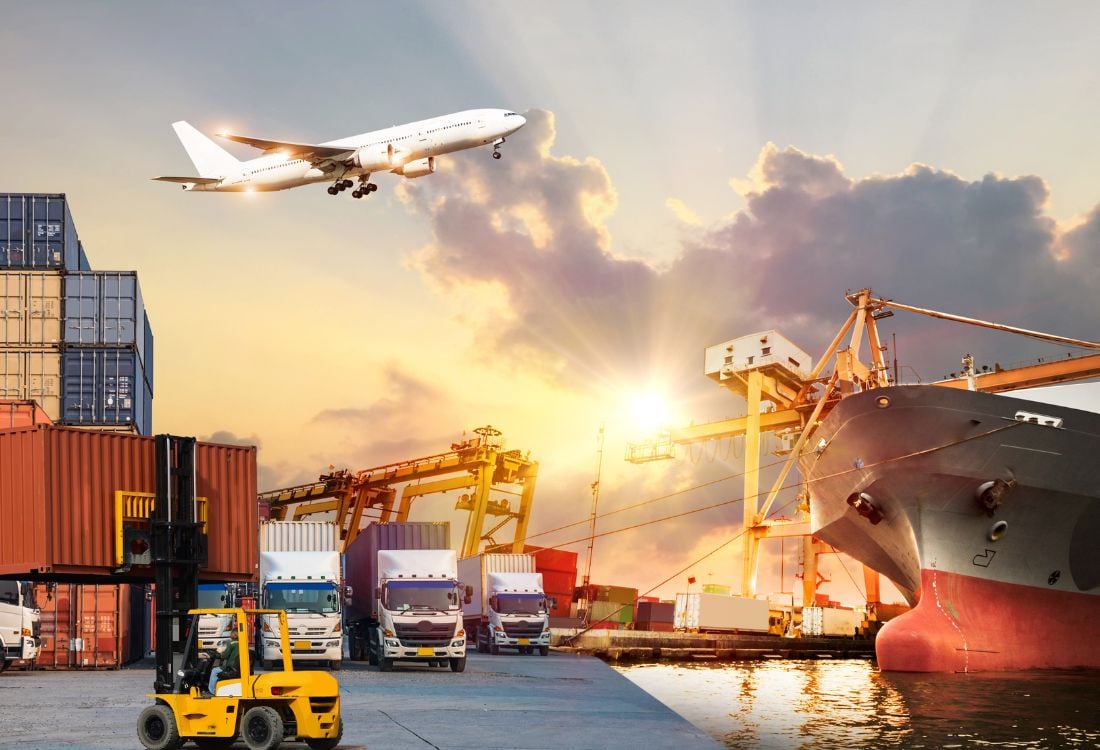
The UK logistics sector has continued to evolve at a rapid pace in 2023, driven by increased consumer demands, environmental/sustainability regulations, and innovations in software and automation technologies. In this article, we’ll look at the main trends that have shaped the sector this year, examining the influence they hold on businesses, and the implications they carry for the future of the logistics industry.
1. Supply Chain Agility
In an increasingly competitive supply environment, supply chain agility has become a crucial component for businesses to stay ahead, necessitating greater resilience and ability to adapt to changing market conditions.
Agility rests on visibility, so the first step to improve agility and resilience is for businesses to integrate their WMS and ERP with e-commerce platforms to streamline their business data flows. This opens access to agility-enhancing solutions such as real-time tracking, flexible outsourced networks, a balance of self-managed with managed services, and partnerships with multiple local logistics providers to enable businesses to stay responsive and adaptable, while ensuring a high level of customer satisfaction.
2. Demand For Real-time Data
Smartphone technology has unlocked the potential of real-time data accessibility for suppliers, customers, and supply chain partners. This unprecedented access to data has equipped organisations with better control and management over logistics and enabled more data-driven decision making. The integration of Internet of Things devices, automated data collection tools, and advanced analytics platforms into the digital ecosystem have given logistics businesses clearer, more comprehensive, and actionable insights into service delivery, contributing to enhanced efficiency, cost reduction, and risk mitigation.
3. Less Than Truckload Demand
The rise in popularity of e-commerce among B2C and B2B customers has driven the growth of smaller, less than truckload (LTL) shipments. For logistics businesses accustomed to larger deliveries for economy of scale, this preference for small and more frequent shipments has presented a cost control challenge. To overcome this, multiple smaller orders from various companies are now often placed on one carrier, with a more flexible transportation model that presents businesses with the opportunity to optimise their logistics processes at the local level. LTL services also help logistics companies overcome the challenges of last mile deliveries (e.g. congestion) by consolidating multiple shipments to different customers into the same lorry.
4. Digitally Evolving Business
The ongoing digital transformation of the logistics sector, including API-based integrations and demand forecasting, has opened up new possibilities for service improvement and strengthened productivity. Software technologies such as machine learning, artificial intelligence, and blockchain have streamlined and automated a wide range of key functions ranging from route optimisation, invoice processing, and even customs clearance, helping improve efficiency and sustain margins at a time when many businesses have been under cost-pressure due to inflation.
5. Warehouse Simulations
Warehouse software simulations offer businesses virtual tools to facilitate more efficient warehouse design, aid workforce training and optimisation, enhance space utilisation, and manage their stock inventory. When combined with robotic process automation, a warehouse simulation platform provides businesses with a virtual testing ground to experiment with various strategic decisions, detect inefficiencies, try out various layouts, improvement opportunities, and processes, and troubleshoot solutions before implementing them in the real world.
6. Cloud Computing
Cloud computing has significantly impacted the logistics sector by making WMS software available through the SaaS (software as a service) model. This lowers the upfront cost of a WMS system for smaller businesses while also making the software available and accessible from any device with an Internet connection. With a wider choice of software systems now available, with easier implementation routes and vendor support, logistics SMEs are now equipped with the flexibility and scalability needed to accommodate rapid growth and respond to market fluctuations.
7. Green Logistics
The logistics sector still has some way to go before it can claim to be ‘green’, but with growing public concern for the environment and ever-stricter government regulations, the industry is increasingly pursuing sustainable practices. Many carriers have invested in electric and hybrid vehicles, implemented route optimisation software to reduce emissions and fuel use, and focused on waste reduction in their supply chain processes over 2023. By focusing on green logistics practices, businesses can reduce their overall carbon footprint, save on fuel, and improve their public image.
What Next?
Speak with LPC today about our consultancy services, and how we can help you harness the power of new trends and technologies to improve your business agility, resilience, and profitability in the coming year.
Image Source: Canva


